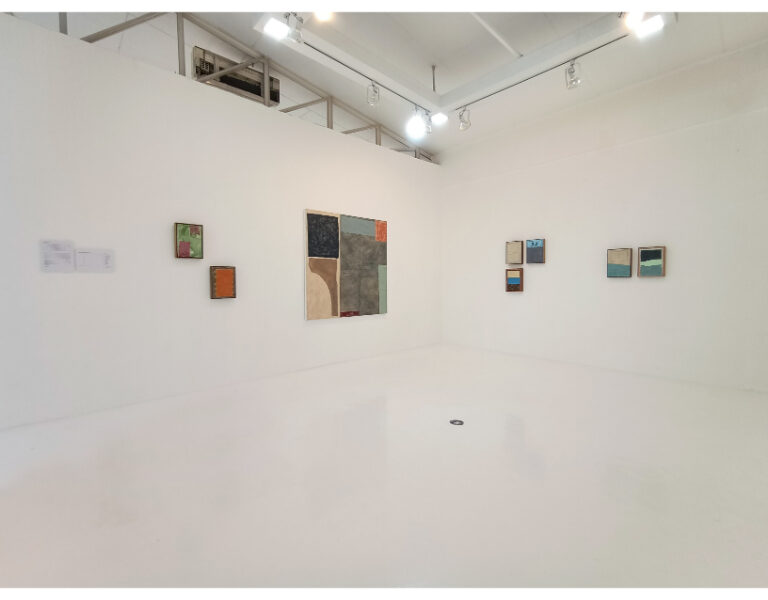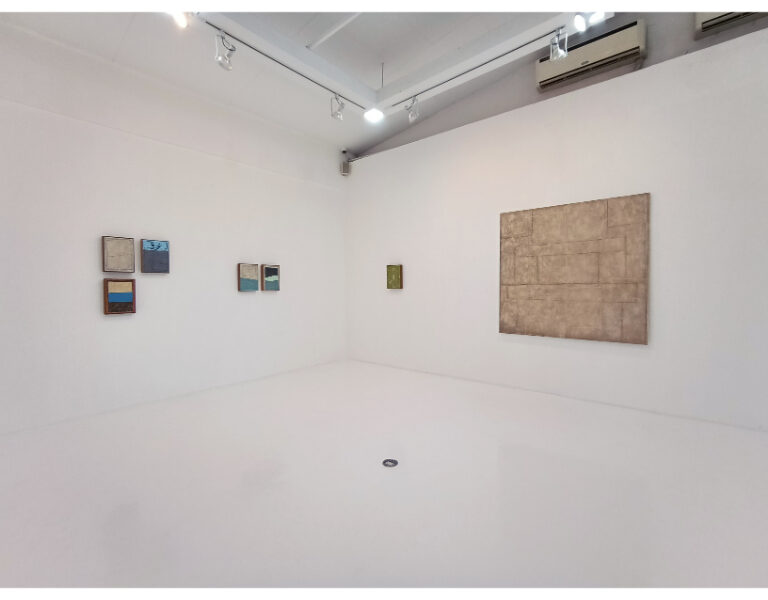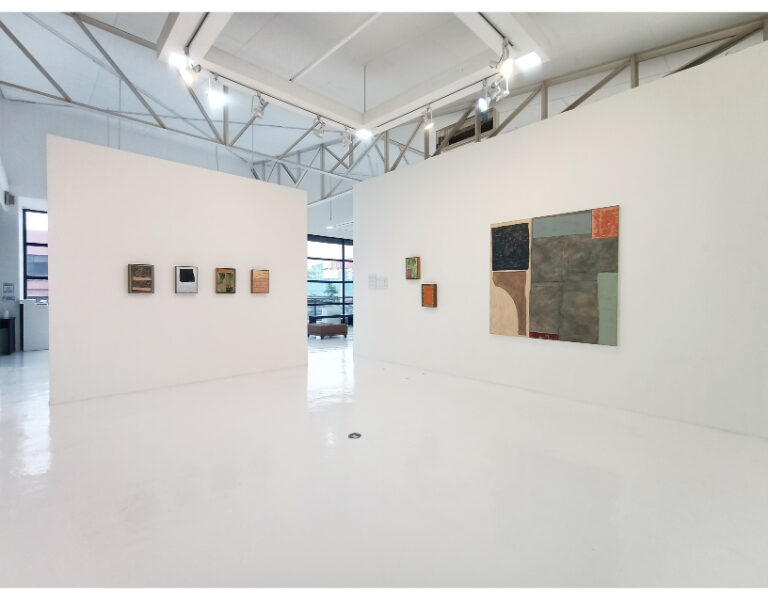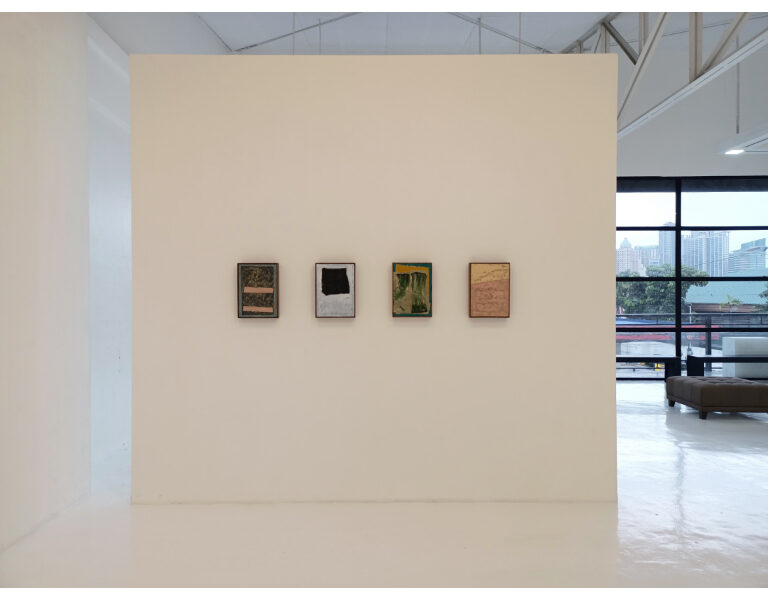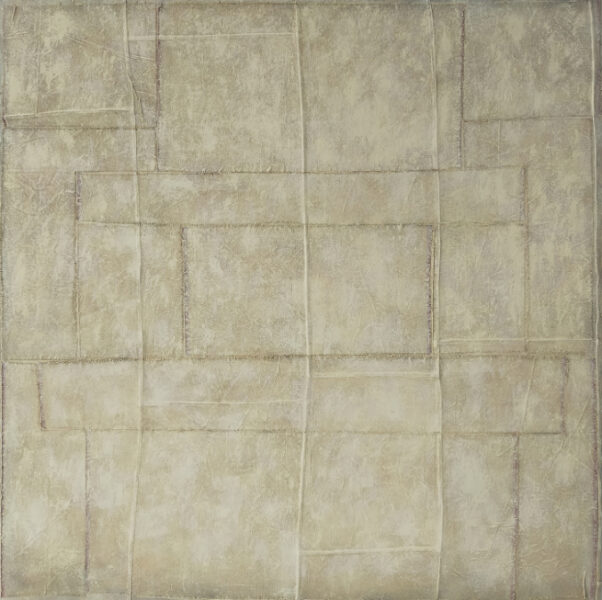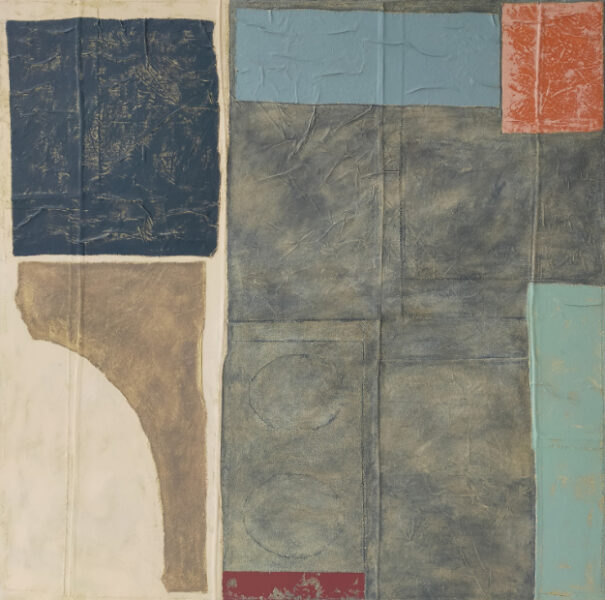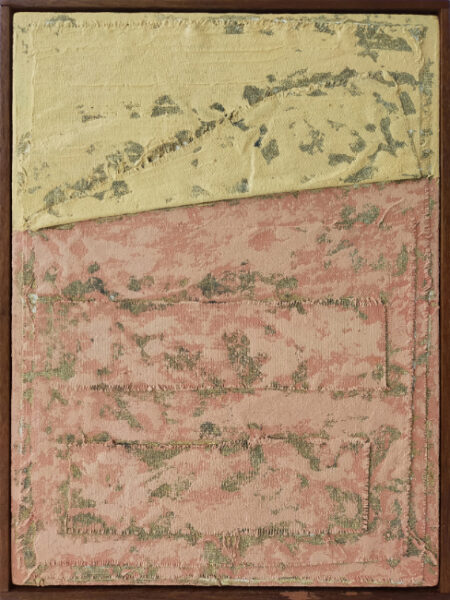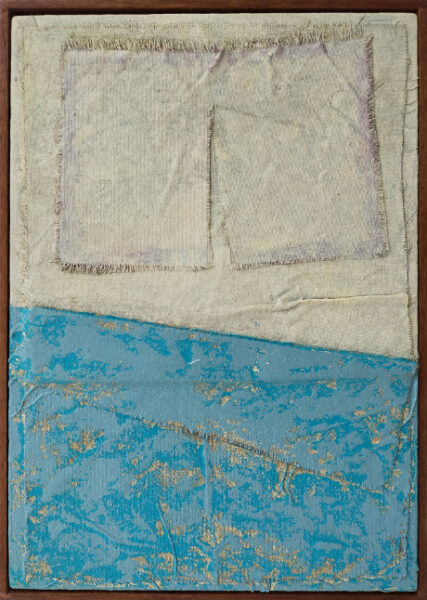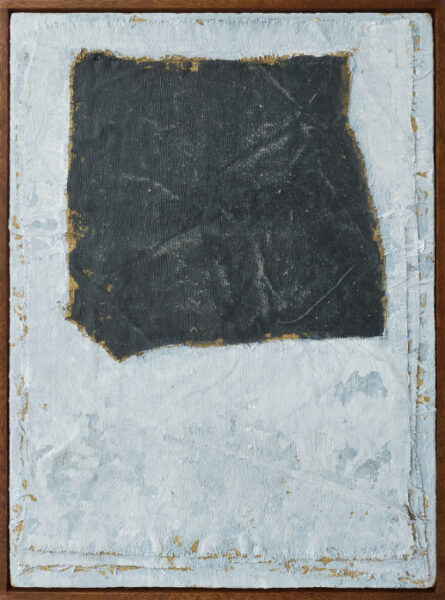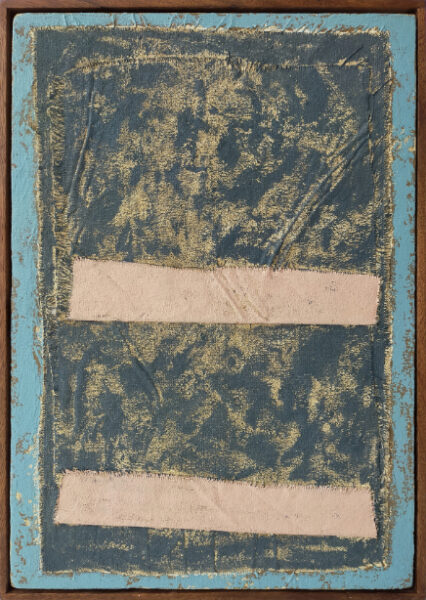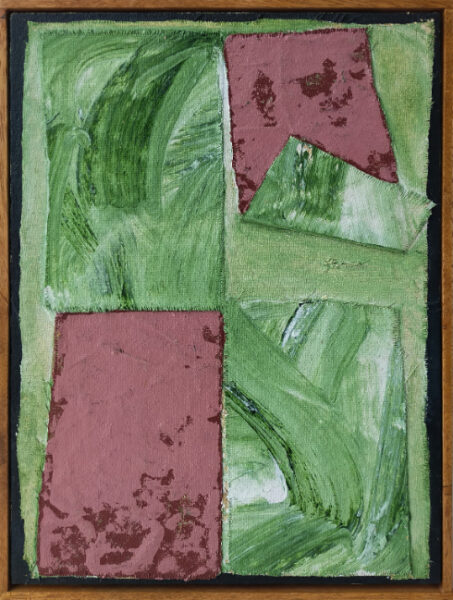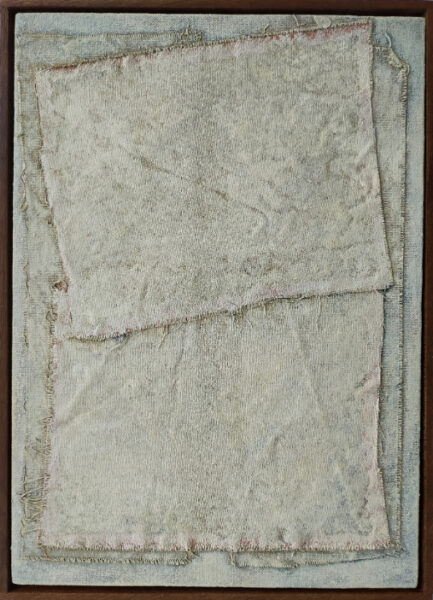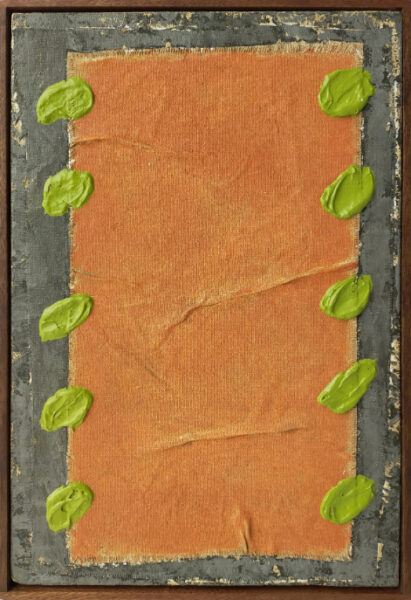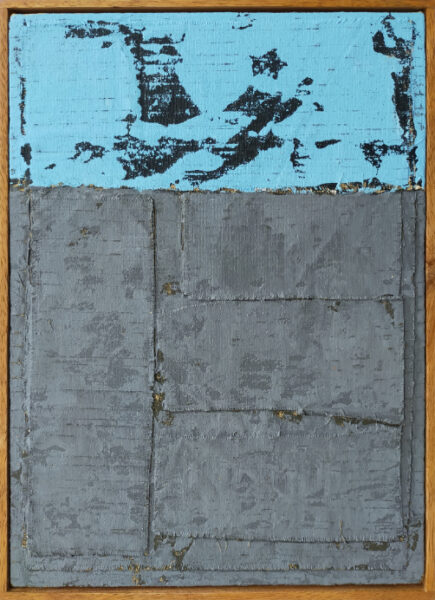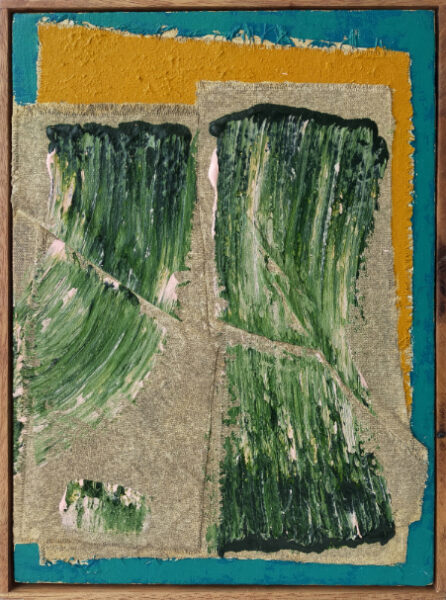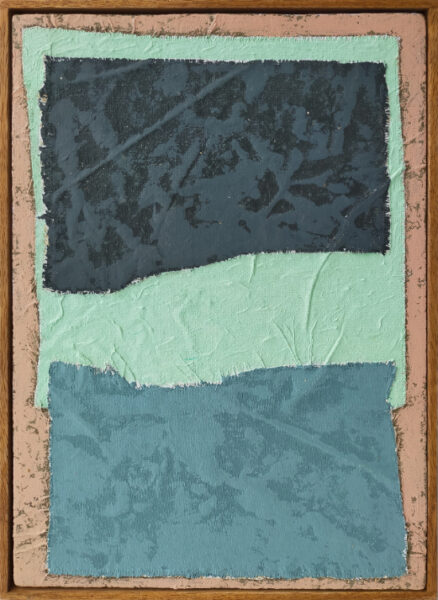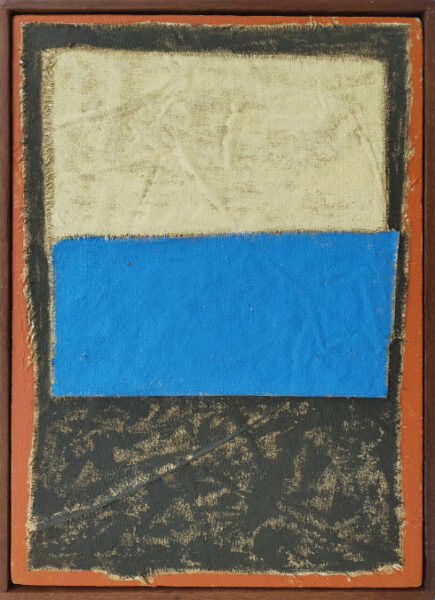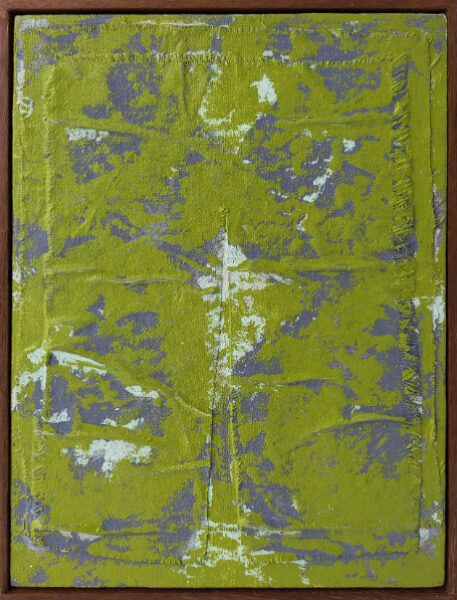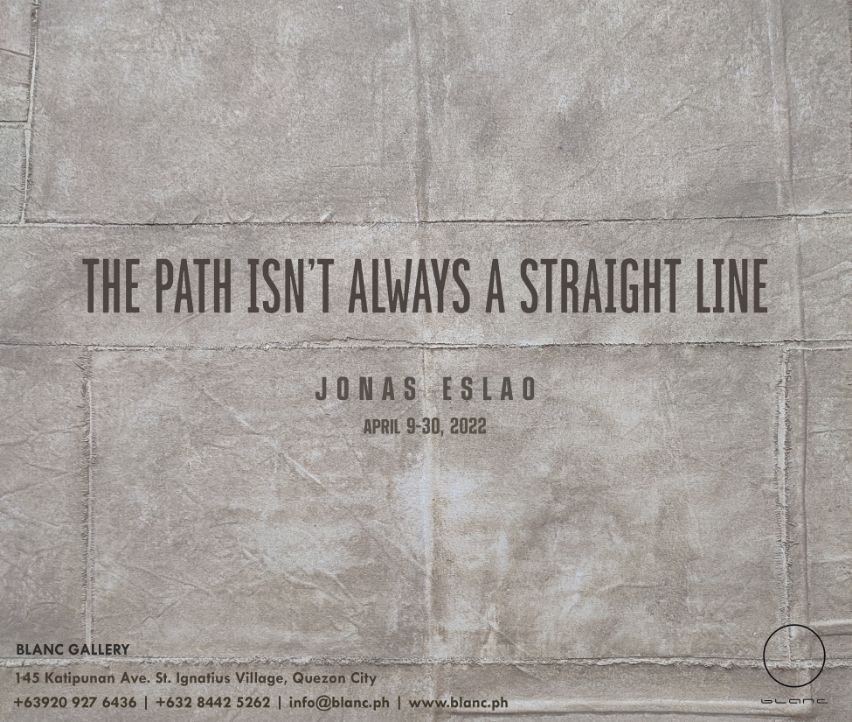
THE PATH ISN’T ALWAYS A STRAIGHT LINE
Discarded and scrap textiles are re-appropriated in Jonas Eslao’s “The Path Isn’t Always a Straight Line”. Here, Eslao produces puzzle-like shapes and forms that build a new surface that acts as a host to the artist’s experimentation with gestural abstraction. The process begins by sourcing the materials from his wood workshop and collating found fabric. Eslao attaches these materials and primes the ground. Unlike in his previous works, the artist’s presence is more evident in the folds and creases initiated in the material rather than the brushstrokes applied to the canvas. The act of tracing and understanding the trajectories of the folds is a process that Eslao compares to ‘course-correction’, a term in space navigation where the vector is recalculated once the spacecraft strays away from its supposed trajectory. The captain compares the location with the planned direction and then creates a new vector for the journey.
Essentially, Eslao likens this intervention as necessary in his art practice, where emotions and feelings influence the way an artist marks his paintings. Drawing our attention to the reconstruction of the material and the surface texture, the production of images becomes only a path to be followed and not necessarily what defines Eslao’s artistic process. Hence, the accumulation of scraps represents his attempts in recalling past encounters with failure and disappointments. However, the re-appropriation of these materials is representative of Eslao’s ability to foster these situations and remain in control. That, in overpowering the chaos and disruption of the past years, the artist confidently navigates the path, amidst roadblocks and inconveniences, to be where he is expected to arrive.
Jonas Eslao (b. 1984) has exhibited extensively since 2007. His works explore abstract expressionism as he creates gestural landscapes and images using household tools, discarded materials, and found objects. Eslao engages in activities where the thrust shown in each painting no longer rests in the images and subjects produced but rather how the internal stimulus of the artist controls every loose brushstroke and every spontaneous motion that happens within. Eslao received his BFA in Painting from the University of the Philippines, Diliman. He lives and works in Manila.
– Gwen Bautista
Works
Documentation
